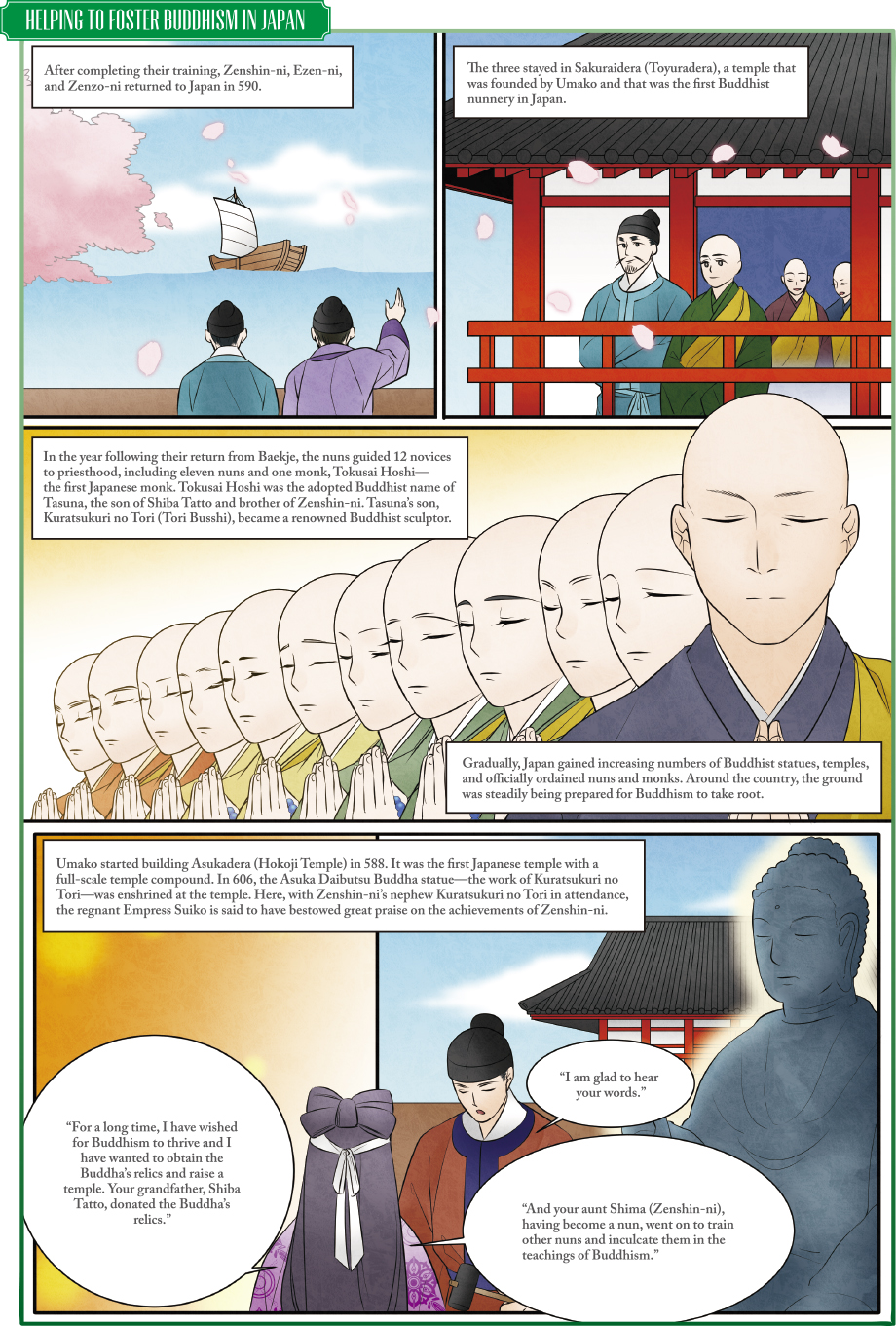The great faith and devotion of one girl becomes the foundation of Buddhism in Japan
Asuka, the cradle of Buddhism in Japan
The three nuns returned from Baekje and stayed in Sakuraidera Temple as chief nuns. Sakuraidera had formerly been the site of Soga no Iname’s Mukuhara residence; it was where Iname had housed a Buddhist statue bestowed upon him by Emperor Kinmei. Mononobe no Okoshi burned down the residence, but Iname’s son Umako later restored it as Sakuraidera. In 592, Suiko renamed the site “Toyurano-miya” and turned it into a palace where she was crowned as empress. Nine years later, after the imperial palace was moved to Oharidano-miya, Umako established a temple on the former site of the Toyurano-miya palace and called it Toyuradera. The remains of this site can be found today on the grounds of Kogenji Temple. This area is the cradle of Buddhism in Japan, being where the first nunnery and other Buddhist institutions were founded. Asukadera Temple was established for male Buddhist priests, because up to that point there had been only nunneries. With the establishment of these institutions, Japan was now ready to propagate Buddhism. One girl launched the entire history of Buddhism in Japan, and the religion would go on to flourish following an era of turmoil.
Life of Zenshin-ni
- 522
- Shiba Tatto, Zenshin-ni’s father, comes to Japan. *Source: Fuso Ryakuki (an ancient historical record of Japan)
- 552
- Buddhism arrives from Baekje. *Some sources put the date at 538.
- 574
- Shiba Tatto has a daughter, Shima, who goes on to become Zenshin-ni.
- 584
- At the age of 11, together with two other girls, Shima participates in an ordination ceremony. From then on they are called Zenshin-ni, Ezen-ni, and Zenzo-ni. Soga no Umako builds a Buddhist sanctum to enshrine a Buddhist statue. The three nuns hold Japan’s first saie ceremony.
- 585
- The three nuns are taken to Tsubaichi and are given a public whipping as punishment for practicing Buddhism.
- 588
- Zenshin-ni, now 15, journeys to Baekje to study Buddhist precepts.
- 590
- Zenshin-ni returns from Baekje at the age of 17.
She becomes a chief nun at Sakuraidera and guides twelve people to priesthood. Year of death: Unknown - Year of death: Unknown
Note: Historical dates follow those used in the Nihon Shoki (“Chronicles of Japan”).Ages are rendered in the traditional Japanese age-reckoning system, in which newborns start from one instead of zero, and age is incremented on New Year’s Day.
Editor’s note: While edited for readability, this story is based on actual historical accounts. Zenshin-ni was without doubt one of the “Heroines of Asuka”. We hope her life story will inspire your interest in the culture and history of Asuka.

